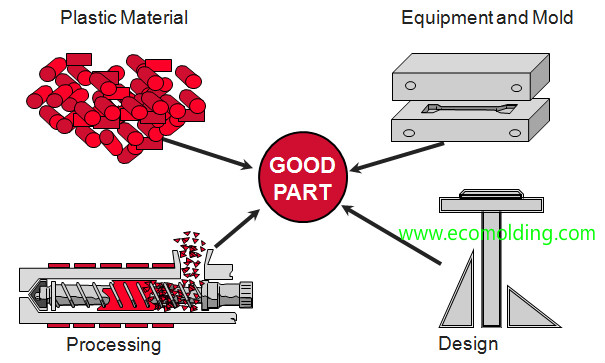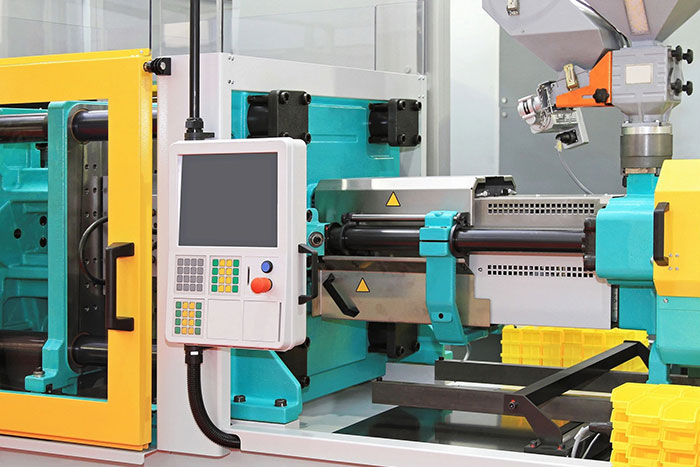Why Plastic Injection Molding Is Essential for Accuracy and Durability
Comprehending the Basics of Plastic Shot Molding Procedures
Plastic shot molding works as a cornerstone of modern production, supplying a systematic approach to generating complex components with accuracy. This process not only incorporates the fundamental actions of melting and infusing materials into mold and mildews however additionally includes a nuanced understanding of numerous influencing aspects, such as temperature level and stress. As markets significantly demand efficiency and top quality, the details of this method end up being much more vital. Exploring these vital aspects could disclose how even small adjustments can cause considerable renovations in production end results, elevating inquiries about the possibility for advancement in this recognized procedure.
What Is Plastic Injection Molding?
Plastic injection molding is a commonly utilized manufacturing procedure that transforms polycarbonate and thermosetting materials right into exact and complex forms. This technique is favored for its capacity to produce high volumes of identical get rid of extraordinary accuracy, making it an important technique in different sectors, consisting of auto, consumer goods, and medical devices.
The process entails melting the chosen plastic material and infusing it right into a mold under high pressure. The mold, designed to the specs of the wanted component, permits the molten plastic to take shape as it solidifies and cools. When the material has actually set, the mold and mildew is opened, and the ended up component is expelled.
Plastic shot molding offers numerous advantages, consisting of minimized waste, uniformity in manufacturing, and the capacity to integrate elaborate designs that may be testing with various other making methods. Additionally, it supports a broad variety of materials, each offering distinct homes that can be tailored for specific applications. As sectors continue to introduce, plastic injection molding stays at the center, making it possible for the growth of advanced items that satisfy advancing consumer needs.
The Injection Molding Refine
The shot molding process is a sophisticated technique that involves several crucial stages to produce high-grade plastic components. Plastic pellets are fed right into a heated barrel where they are melted right into a thick fluid. This molten plastic is then injected under high stress into a precision-engineered mold, which shapes the product into the desired form.
Once the mold is filled up, the plastic is permitted to strengthen and cool, taking the shape of the mold and mildew dental caries. Cooling time is important, as it influences the cycle time and the final properties of the shaped part. After adequate cooling, the mold and mildew opens, and the finished component is expelled using ejector pins.

Materials Used in Injection Molding
Different materials can be used in the shot molding process, each offering one-of-a-kind homes that deal with details applications. The most generally made use of products include thermoplastics, thermosetting plastics, and elastomers.

Thermosetting plastics, like epoxy and phenolic resins, go through a chemical adjustment throughout the healing procedure, leading to an inflexible, stringent structure. These materials are optimal for applications needing high warm resistance and structural stability, frequently made use of in electrical insulators and vehicle parts.
Elastomers, including silicone and rubber-based materials, offer flexibility and durability. Their special residential or commercial properties make them suitable for applications that require elasticity, such as seals and gaskets.
In addition, specialty materials like bio-based plastics and compounds are acquiring grip for their environmental advantages and enhanced efficiency characteristics, widening the range of injection molding applications in various industries. Understanding the homes of these products is crucial for choosing the proper type for certain projects.
Advantages of Injection Molding
Injection molding stands out as a very efficient production process that uses many benefits for producing complicated get rid of accuracy. One of the most considerable benefits is the capacity to produce detailed layouts that would certainly be impossible or challenging to accomplish with other approaches (Plastic Injection Molding). The procedure enables for limited resistances and thorough features, check my blog guaranteeing top quality parts
Additionally, shot molding is understood for its quick production capabilities, making it an ideal option for high-volume production. When the mold and mildew is developed, parts can be created quickly, lowering lead times and enhancing general performance. This efficiency not only lowers manufacturing expenses however also supplies an one-upmanship in the market.
The adaptability of products used in injection molding better enhances its charm. A wide array of thermoplastics and thermosetting polymers can be utilized, permitting manufacturers to choose materials that finest meet their certain needs, including heat, toughness, and flexibility resistance.
Furthermore, the process lessens waste, as excess material can commonly be reused and reused. This sustainability facet adds to a lowered ecological influence, making shot molding a responsible manufacturing selection. In general, the benefits of injection molding make it a preferred approach for many markets.
Variables Influencing Product Top Quality
While various factors can affect item top quality in shot molding, understanding these components is crucial for achieving ideal results. Trick elements consist of material choice, processing criteria, and mold and mildew layout.
Product choice plays an important duty, as various polymers exhibit unique buildings that impact flowability, strength, and thermal stability. Insufficient material option can cause issues such as warping or incomplete filling.
Handling specifications, consisting of pressure, cycle, and temperature time, should be thoroughly regulated. Variants in these setups can cause variances partially dimensions and surface area coating. Exceedingly high temperatures might trigger deterioration of the polymer, while inadequate pressure can result in short shots.
Mold design is equally important, as it identifies the flow of the molten plastic and the cooling procedure. Improperly made molds might result in unequal cooling prices, resulting in dimensional mistakes and recurring stress and anxieties.

Verdict
Finally, plastic injection molding acts as a critical production procedure that allows the effective manufacturing of high-grade components. Mastery of the shot molding procedure, consisting of the understanding of materials and the impact of different elements on item quality, is essential for accomplishing optimum results. The benefits of this method, such as cost-effectiveness and layout versatility, further highlight its significance across several markets, strengthening its condition as a favored selection for high-volume production.
Plastic shot molding offers as a foundation of modern-day production, supplying a systematic strategy to producing complex elements with precision.Plastic injection important link molding offers a number of benefits, including lowered waste, uniformity in production, and the ability to include complex styles that may be testing with various other producing approaches (Plastic Injection Molding). As sectors continue to innovate, plastic shot molding stays at the leading edge, making it possible for the advancement of sophisticated items that satisfy developing customer demands
The shot molding process is a sophisticated method that entails numerous essential stages to produce high-grade plastic components.In verdict, plastic injection molding offers as a vital production process that enables the reliable production of top quality components.